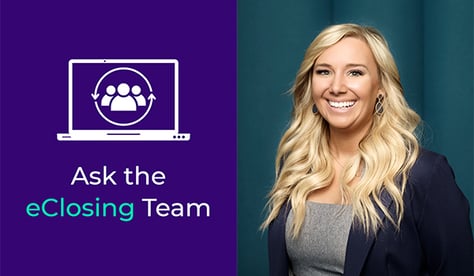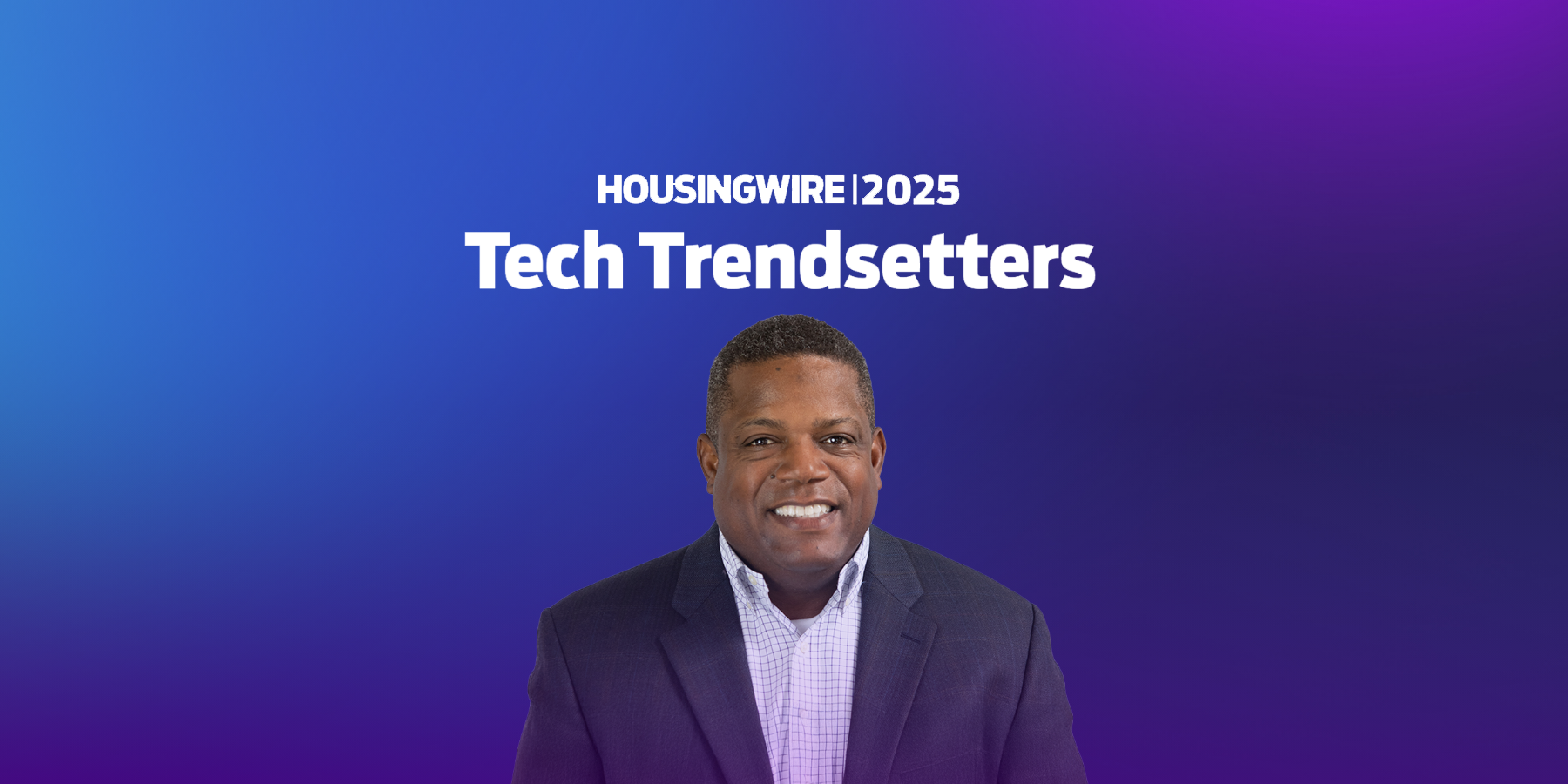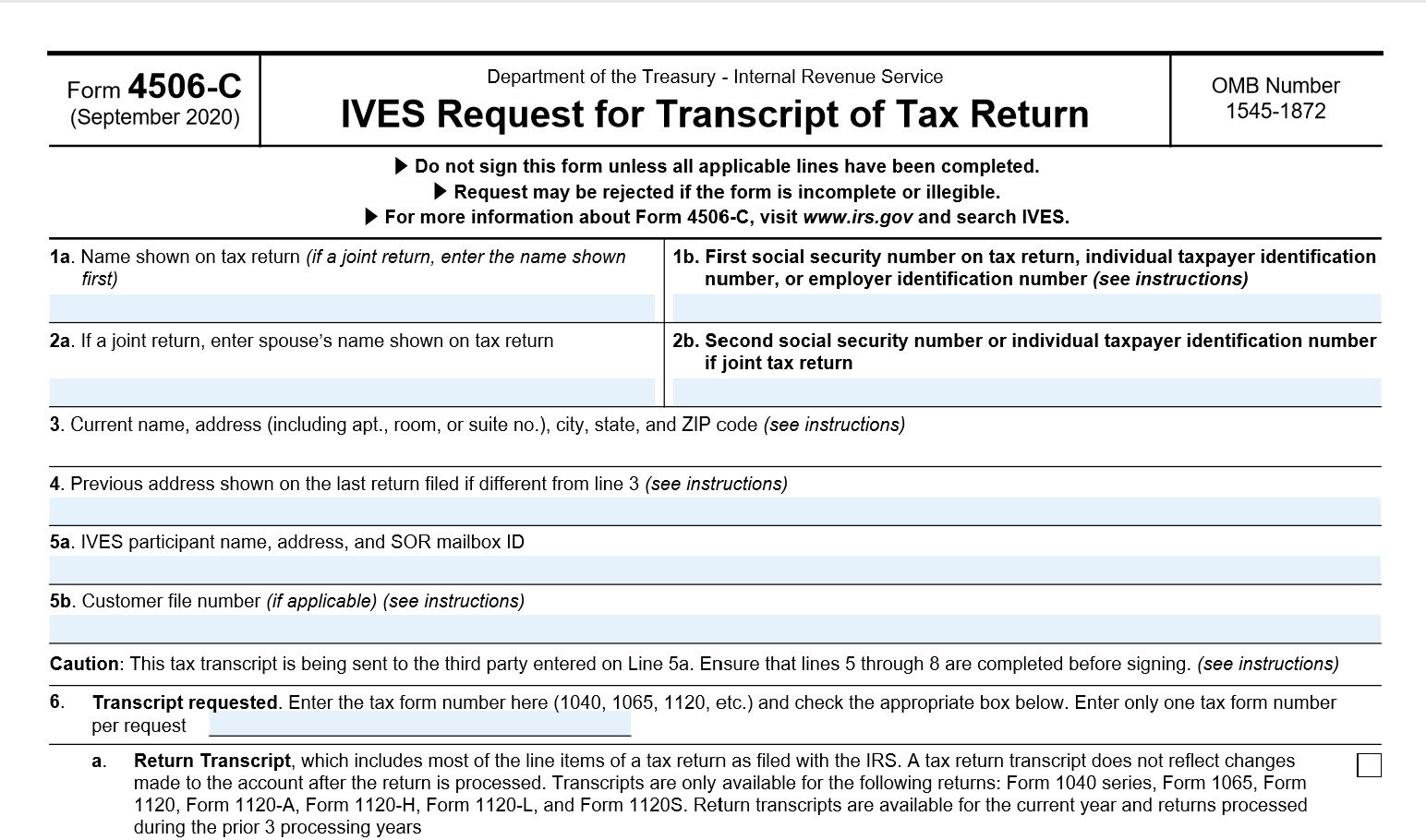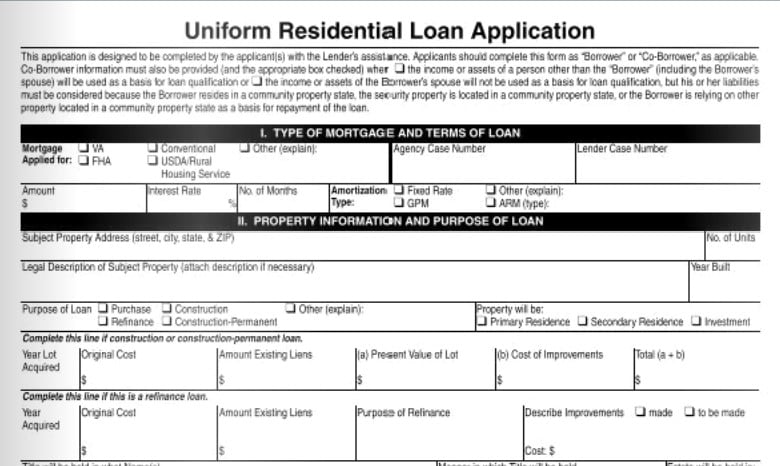Ask the eClosing Team: What steps should Ienders take to get set up for eClosing?
Welcome to Ask the eClosing Team, a new series where DocMagic’s eClosing pros tackle real questions that we’re hearing from lenders. Today’s response is supplied by eClosing Team member Leah Sommerville, Senior Account Executive at DocMagic.
 What steps should Ienders take to get set up for eClosing?
What steps should Ienders take to get set up for eClosing?
Lenders embarking on a digital lending journey have several steps they should take to successfully prepare for eClosing.
Regardless of which eClosing opportunities lenders pursue — from hybrid eClosings to a completely digital eClosing — here are the components that are key to a successful eClosing initiative:
1. Identify an internal eClosing project leader.
Lenders must select an internal stakeholder to lead the transition to eClosing. “Someone needs to champion the eClosing initiative and take ownership of it,” Sommerville said.
Lenders occasionally (and mistakenly) assign someone from their IT team as the project leader, under the assumption that implementing eClosing is primarily a tech project. “eClosing is an operational improvement to increase the entire organization's closing efficiency,” Sommerville said. “The most successful project leader is often an operational manager familiar with the organization’s existing workflow. This insight is important as teams transition to a digital closing workflow.”
Ask the eClosing Team: What do lenders need to get set up for eNotes?
The project leader does not have to be a C-suite level executive, but they should still have the support of and be in constant communication with the executive sponsor. The project leader should also be in a position of leadership, as they will be responsible for setting the organization’s rollout deadlines and adoption milestones and holding the all-important kickoff meeting to ensure the team understands the goals.
Sommerville has seen some organizations fail to successfully scale eClosing adoption when the project leader attempts to implement the eClosing process alone, believing they should have a few solo successes first before convincing others to get on board. “This isn’t a project for one person. The entire team must get behind eClosings as the default option,” she said.
2. Confirm executive commitment for your eClosing initiative.
An eClosing strategy may not always require executive approval to implement, but it always requires executive commitment to succeed. An executive sponsor at the C-suite level must show that they strongly support eClosing — not just with words, but actions.
One large lender that Sommerville worked with had hundreds of branches, all of which were treated as independent entities. While the lender’s executive sponsor supported eClosing, this CEO allowed each branch to decide how and when to implement eClosings. The attitude was, “eClosing is a great option, but it’s up to you.”
“Unfortunately, results were dismal. LO’s didn’t take the initiative,” Sommerville said. “The CEO knew eClosing provides benefits to the company and borrowers, but because she didn’t say, ‘This is how we should be doing it,’ the people on the ground didn’t feel the need to improve how they conducted closings.”
3. Determine your eClosing roadmap.
One of the most important steps for lenders is creating a detailed eClosing roadmap, which should lay out which versions of eClosing they will introduce; planned eClosing options for the future; and realistic rollout deadlines and adoption goals.
Sommerville warns strongly against implementing eClosing without a strategic roadmap. “It’s like being a boat at sea with no rudder. You can’t reach your end goal if you don’t know how you’re going to get there,” she said.
It’s easiest to implement an eClosing workflow with basic eSign Hybrids (which DocMagic refers to as a Hybrid 1); this type of hybrid allows the borrower to preview all documents in advance of the closing and eSign almost 90% of the closing package, papering out only the traditional promissory note and any documents which require notarization. Hybrid 1 eClosings can be implemented in as little as 24 hours and have no barriers to 100% full-scale adoption.
eSign Hybrids can be introduced as a first step for lenders as they prepare to also provide eNotes and/or eNotarization. “A staged rollout allows lenders to crawl, walk and then run for the most successful long-term adoption of this eClosing,” Sommerville said.
While considering their roadmap lenders should set specific target goals, such as the number (and versions) of eClosings they plan to provide monthly and then quarterly compared to their overall loan volume, for example.
Unfortunately, lenders who don’t conduct enough eClosings early during the adoption process are likely to lose momentum. “The largest factor that causes these initiatives to fall off track is when lenders don’t gain enough experience initially,” Sommerville said.
4. Select the right eClosing technology partner.
When selecting an eClosing technology partner, lenders should seek one that offers an end-to-end solution that supports all eClosing workflows. Even if lenders start with a basic eSign Hybrid, they should assume that at some point they may want to also offer eNotes or eNotarization options.
“Lenders want to select a technology partner capable of supporting their immediate and future eClosing strategies, so they have room for growth,” Sommerville said. “Additionally, a robust eClosing platform should include proprietary technology for a seamless experience. By selecting an end-to-end technology platform, lenders are empowered for all eClosing processes and assistance by a single source in the future.”
The right technology provider should also be compatible with the lender’s existing technology partners, such as their loan origination system (LOS), point of sale (POS) or document storage systems. DocMagic, for example, has an open application programming interface (API), meaning that existing integrations are already abundant.
Additionally, eClosing providers should ensure internal users are trained and knowledgeable. Lenders are encouraged to test their new eClosing processes. “We want lenders to be as familiar as possible with the eClosing process before they provide this experience to borrowers,” Sommerville said, noting that DocMagic clients can run as many tests and samples as they need, at no additional charge.
5. Confirm that your external business partners can support eClosing.
Lenders need to confirm if their settlement agents are familiar with eSigning and/or eClosing. Often, lenders are pleasantly surprised to learn that their settlement partners already include some form of eSigning or even eNotarization in their business processes.
While many lenders assume that they’re responsible for training settlement agents themselves, a technology vendor like DocMagic actually handles the agent training and onboarding on the lender’s behalf.
Additionally, most of the settlement agents that Sommerville works with leverage Simplifile for eRecording services. Fortunately, DocMagic has an integration with Simplifile, so settlement agents who use their service don’t even have to leave the Simplifile platform.
Finally, if lenders plan to facilitate eNotes, they must communicate their plans to sell these eNotes to warehouse partners and investors, as well as activate their MERS eRegistry membership as required for eNote registration.
The eClosing Team can be reached at eClosingTeam@docmagic.com.
Related Content:
Let us digitally transform your mortgage process for increased efficiency and ROI. See how by scheduling a demo today.
Topics from this blog: eClosing
BackSearch the Blog
- Recent
- Popular
- Topics










List By Topic
- Compliance (100)
- eClosing (85)
- eSign (71)
- Awards (70)
- Integrations (57)
- Industry Publications (52)
- Total eClose (44)
- eNotes (34)
- Remote Online Notarization (31)
- Document Generation (30)
- eDisclosures (25)
- GSEs (18)
- eVault (18)
- eNotary (16)
- SmartCLOSE (13)
- LoanMagic (12)
- eDelivery (11)
- Philanthropy (8)
- Partnerships (7)
- Industry Insight (4)
- AutoPrep (3)
Subscribe Here
Download the Truliant Federal Credit Union Case Study
Truliant took several key steps to refine its 100% digital eClosing process — including finding the right technology partner.
